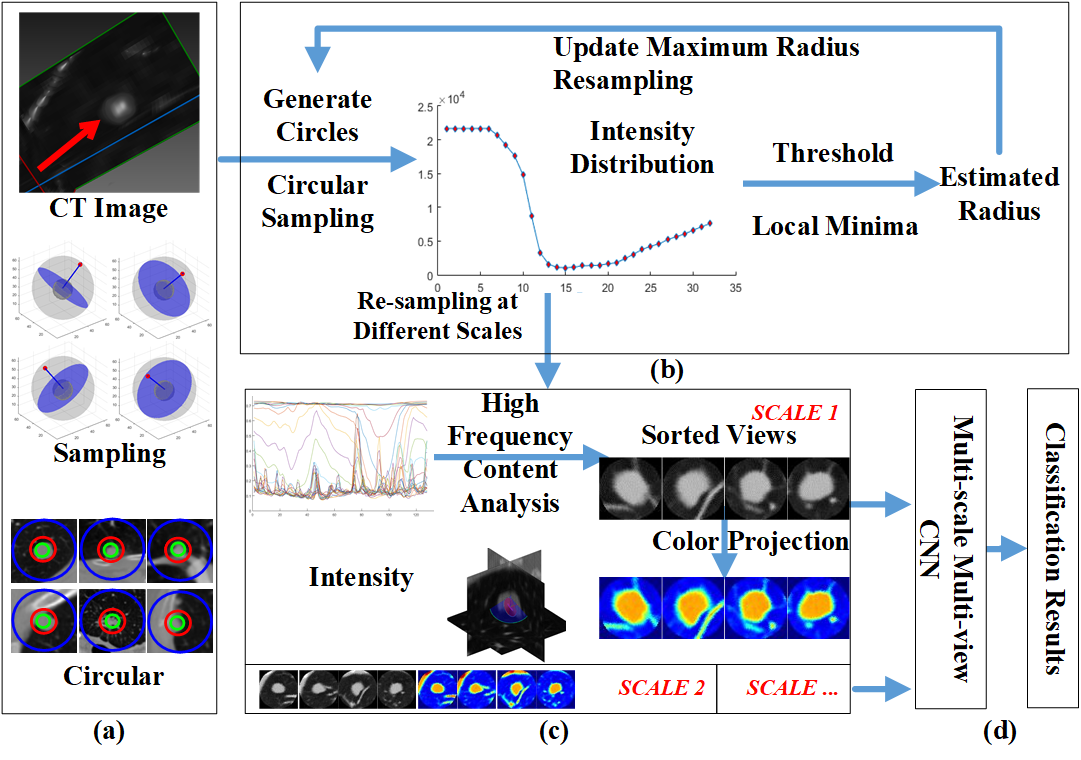Multi-view Multi-scale CNNs for Lung Nodule Type Classification from CT Images
Our new paper for the PR has been online!
asbtract
In this paper, we propose a novel convolution neural networks (CNNs) based method for nodule type classification. Compared with classical approaches that are handling four solid nodule types, i.e., well-circumscribed, vascularized, juxta- pleural and pleural-tail, our method could also achieve competitive classification rates on ground glass optical (GGO) nodules and non-nodules in computed to- mography (CT) scans. The proposed method is based on multi-view multi-scale CNNs and comprises four main stages. First, we approximate the spherical sur- face centered at nodules using icosahedra and capture normalized sampling for CT values on each circular plane at a given maximum radius. Second, intensi- ty analysis is applied based on the sampled values to achieve estimated radius for each nodule. Third, the re-sampling (which is the same as the first step but with estimated radius) is conducted, followed by a high frequency content measure analysis to decide which planes (views) are more abundant in infor- mation. Finally, with approximated radius and sorted circular planes, we build nodule captures at sorted scales and views to first pre-train a view independent CNNs model and then train a multi-view CNNs model with maximum pooling. The experimental results on both Lung Image Database Consortium and Image Database Resource Initiative (LIDC-IDRI) [1] and Early Lung Cancer Action Program(ELCAP) [2] have shown the promising classification performance even with complex GGO and non-nodule types.
Simple pipeline:
